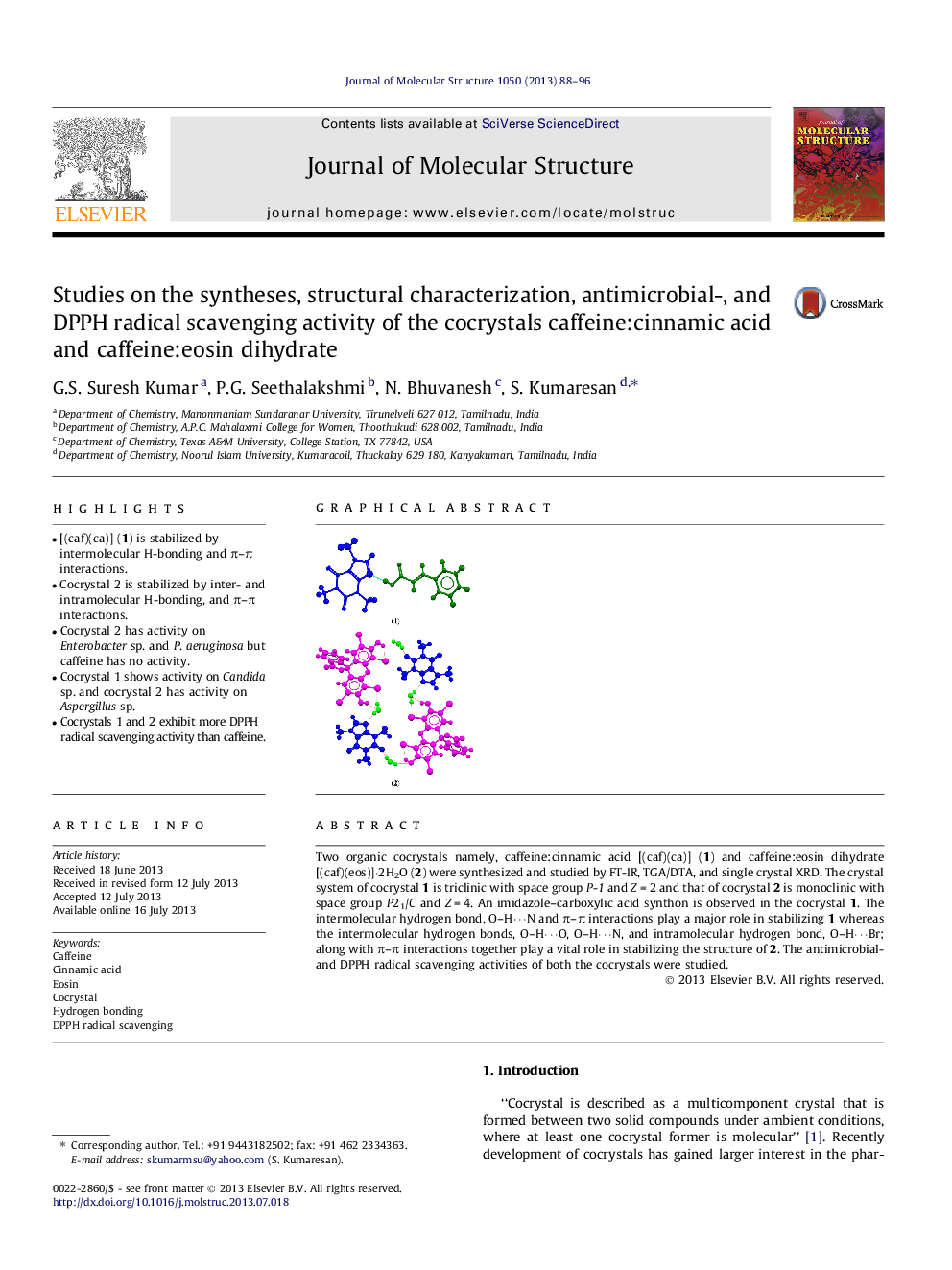| Article ID | Journal | Published Year | Pages | File Type |
|---|---|---|---|---|
| 1408634 | Journal of Molecular Structure | 2013 | 9 Pages |
•[(caf)(ca)] (1) is stabilized by intermolecular H-bonding and π–π interactions.•Cocrystal 2 is stabilized by inter- and intramolecular H-bonding, and π–π interactions.•Cocrystal 2 has activity on Enterobacter sp. and P.aeruginosa but caffeine has no activity.•Cocrystal 1 shows activity on Candida sp. and cocrystal 2 has activity on Aspergillus sp.•Cocrystals 1 and 2 exhibit more DPPH radical scavenging activity than caffeine.
Two organic cocrystals namely, caffeine:cinnamic acid [(caf)(ca)] (1) and caffeine:eosin dihydrate [(caf)(eos)]·2H2O (2) were synthesized and studied by FT-IR, TGA/DTA, and single crystal XRD. The crystal system of cocrystal 1 is triclinic with space group P-1 and Z = 2 and that of cocrystal 2 is monoclinic with space group P21/C and Z = 4. An imidazole–carboxylic acid synthon is observed in the cocrystal 1. The intermolecular hydrogen bond, O–H⋯N and π–π interactions play a major role in stabilizing 1 whereas the intermolecular hydrogen bonds, O–H⋯O, O–H⋯N, and intramolecular hydrogen bond, O–H⋯Br; along with π–π interactions together play a vital role in stabilizing the structure of 2. The antimicrobial- and DPPH radical scavenging activities of both the cocrystals were studied.
Graphical abstractFigure optionsDownload full-size imageDownload as PowerPoint slide
